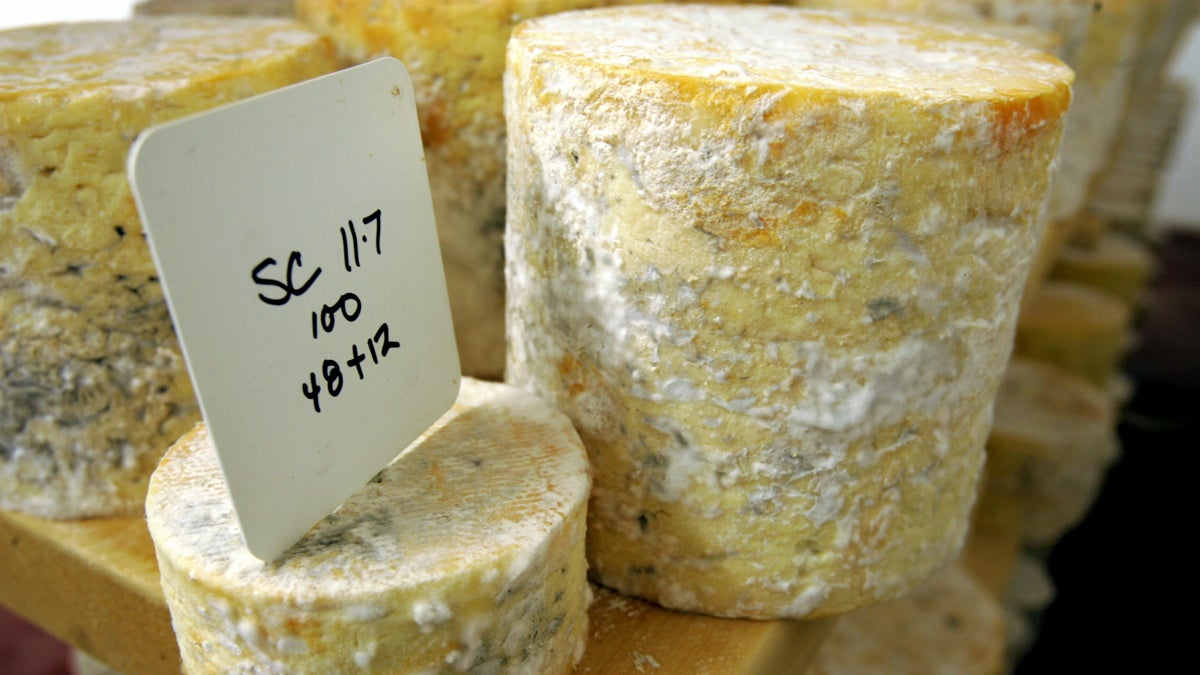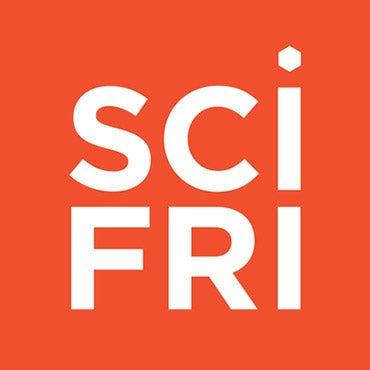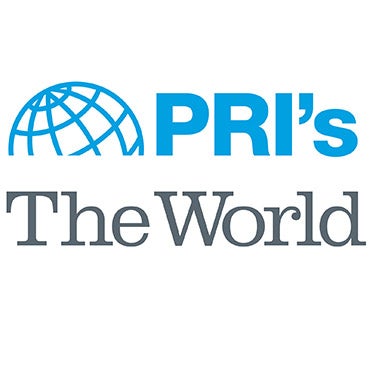On a cheese rind, war and peace
Listen
(AP File Photo/Steven Senne)
Scientists study stinky, moldy cheeses in hopes of making bigger discoveries about us.
Ihsan Gurdal knows a lot about cheese. He’s the co-owner of Formaggio Kitchen, a gourmet grocer in Cambridge, Massachussetts that carries wines, olive oil, fresh produce, and every type of cheese you can imagine.
Crowding together between the cheese samples and the high-as-the-ceiling wine racks, he gives me this tip: “Taste before you buy, and buy what you need.”
I trust him. Gurdal collects cheeses from all over the world for Formaggio Kitchen. He tells me some of the cheeses are so rare, they come from individual shepherds in the Pyrenees Mountains.
Yet, some of the most interesting cheeses Gurdal stocks aren’t above ground in the shop, they’re below.
In the bowels of Formaggio are the Kitchen’s cheese caves—two of them—each about the size of a small closet. Each cave is covered with wall-to-wall wooden shelves, stocked with row after row of aging cheeses. The smell is much like you’d expect—a combination of old socks and basement mold.
Gurdal points out and easily names each of the cheeses surrounding us: natural rinds, dutch cheeses, mountain cheeses, cow’s milk cheeses, the list goes on and on.
The caves are cooler than the upstairs store, kept around 45 degrees Fahrenheit. A small fountain gurgling in the middle of one of the caves keeps the air wet. The fountain breaks the water continually, he explains, so “there’s a very gentle mist coming out of it.”
This atmosphere feels more than a tad gross to me, but is ideal for the cheese. It allows the microbes that make the cheese delicious, to flourish. And Ihsan isn’t the only one who wants to ensure the cheese will cultivate microbes.
Fifteen minutes down the road is a industrial-looking building that belongs to Tufts University. Inside are slick-looking biology labs. This is where, under a fume hood, Benjamin Wolfe, a biology professor at Tufts University, peels back a cheese microbe sample and gives me a whiff. It smells terrible.
“People pick up cheese and think of it as this beautiful simple lawn of mold, and they put it in their mouth and don’t think any more,” he says. “But actually, on a cheese rind, it’s really war and peace.”
Wolfe and his colleagues recently finished a study using 137 samples from Ihsan’s cave, among many others. They found cheesemakers could essentially engineer the microbes on their cheeses. In other words, cheeses in two different caves could cultivate identical bacteria, while similar cheeses in the same cave could hold entirely different microbes.
Wolfe explains to me that they normally find three different types of microbes on cheese: bacteria, yeast, and molds.
“In the bacteria, we see some microbes that are similar to the microbes that grow in the human microbiome,” says Wolfe. “So the reason that your feet smell bad is because there’s a group of bacteria known as Brevibacterium that produce some sulfur compounds, and those similar types of bacteria grow on cheese which is why some cheeses smell pretty terrible.”
The similarities between what grows on cheese and what grows on the human body are one important reason Wolfe is studying cheese. He suggests the more we learn about bacteria and fungi on cheese, the more we’ll know about how similar bacteria and fungi work elsewhere, on more complex organisms like humans. In that way, cheese functions as a simple community to test hypotheses on that may apply to more complicated communities as well.
In addition, Wolfe says studying cheese microbes could yield new microbes to help help fight harmful bacteria.
“We do see some of these fungi producing antimicrobials and maybe those will be useful compounds in the future,” he says. “A lot of these fungi haven’t been well studied, so there could be great promise for finding new compounds that would be useful for us.”
His work reminds me of something Gurdal told me while we were in the caves, that they aren’t just for show and are meant to be functional and serve a purpose. As Wolfe’s work shows, it’s even more true than he could have guessed.
WHYY is your source for fact-based, in-depth journalism and information. As a nonprofit organization, we rely on financial support from readers like you. Please give today.



